The Nascent Stream Steward
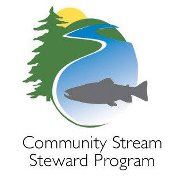 My evolution as an angler has taken me on a lot of great adventures. I’ve visited all sorts of different lakes, rivers and ponds, fished for many different species, tried a variety of techniques, and met some wonderful people. But perhaps the biggest thing that has come of this evolution, has been the awakening of the steward in me. Learning what makes for a healthy ecosystem, and learning how to help out, have had a major impact on my life. Not only do these activities create healthy fisheries, but they also increase the health of the human beings living in these areas. I have been looking for opportunities that allow me to further my knowledge and ability to make a difference, and not long ago I found a fantastic one.
My evolution as an angler has taken me on a lot of great adventures. I’ve visited all sorts of different lakes, rivers and ponds, fished for many different species, tried a variety of techniques, and met some wonderful people. But perhaps the biggest thing that has come of this evolution, has been the awakening of the steward in me. Learning what makes for a healthy ecosystem, and learning how to help out, have had a major impact on my life. Not only do these activities create healthy fisheries, but they also increase the health of the human beings living in these areas. I have been looking for opportunities that allow me to further my knowledge and ability to make a difference, and not long ago I found a fantastic one.
I learned that the Community Stream Steward Program (CSSP) was offering a Stream Steward Training Program. I immediately made plans to attend, and on a rainy Thursday evening found myself headed to Oshawa for the first day of training.
The program was run by the incredibly talented, organized and informative Andrea Hicks from CSSP. With her guidance, and the help of some wonderful guest speakers, the 17 or so of us future stewards got a great education in stream stewardship.
What is a Stream Steward?
Stream Stewards are people that volunteer their time by getting directly involved in improving the health of their local coldwater streams. This is done by getting to know their local streams and the landowners, and providing a link between the landowners and the agencies that can provide project assistance. Stream Stewards are advocates for stewardship practices within their community.
Being a Stream Steward involves a major commitment. First, you must educate yourself about healthy stream and watershed characteristics through formal training opportunities. You need to identify a reach of stream that you will concern yourself with, and get permission from landowners to investigate the area and suggest potential projects. If you identify a project, you will then need to assist in the project planning and implementation, as well as coordinating volunteers. Being a Stream Steward involves more than just the project, you need to be involved with the community and be a role model and advocate for best management practices. The guideline suggests that Stream Stewards will spend 50-60 hours per year volunteering their time.
Stream Education
Learning about stream features was perhaps the easiest part of the program, from the perspective of an avid angler. I have spent a lot of time on the water trying to break down a stream and find fish. Anglers who put in the effort on the water, and doing research at home, will understand the features that make a stream – riffles, runs and pools, as well as vegetation, overhanging backs, and woody debris. These are features that should be present in a healthy stream. A healthy coldwater stream will be great habitat for trout.
Our classroom experience emphasized the need to consider the entire watershed when assessing and planning a project in our reach of stream. From the headwaters that rarely look like a stream, to the areas downstream of your stretch that will be affected by things such as migration of sediments and nutrients, the entire system needs to be considered. If you are planning a project, make sure it will have a positive effect on the rest of the stream.
We were introduced to the variety of opportunities for funding and planning assistance. There are quite a few agencies that will be of help when planning a project, both with funding and expertise.
Don’t Forget Permits!
Something I had not really considered before was the amount of legislation that protects streams, fish, and other wildlife. Whether it’s the Navigable Waters Act, the Fisheries Act, the Conservation Authorities Act, or a host of other legislation, all Stream Stewards need to take into consideration what legislation may govern their project and act accordingly. I don’t think I will ever undertake any project without first consulting a Conservation Authority!
Stream Restoration
Of course, once a problem is identified within your reach of stream, you need to figure out how to solve it. There a variety of ways to restore a stream – whether it’s by creating riparian buffers, or stabilizing the banks of the stream. I found the bank stabilization techniques fascinating and have noticed techniques like using cedar bundles at a couple of streams I have since visited. When bank stabilization is called for, get the experts involved.
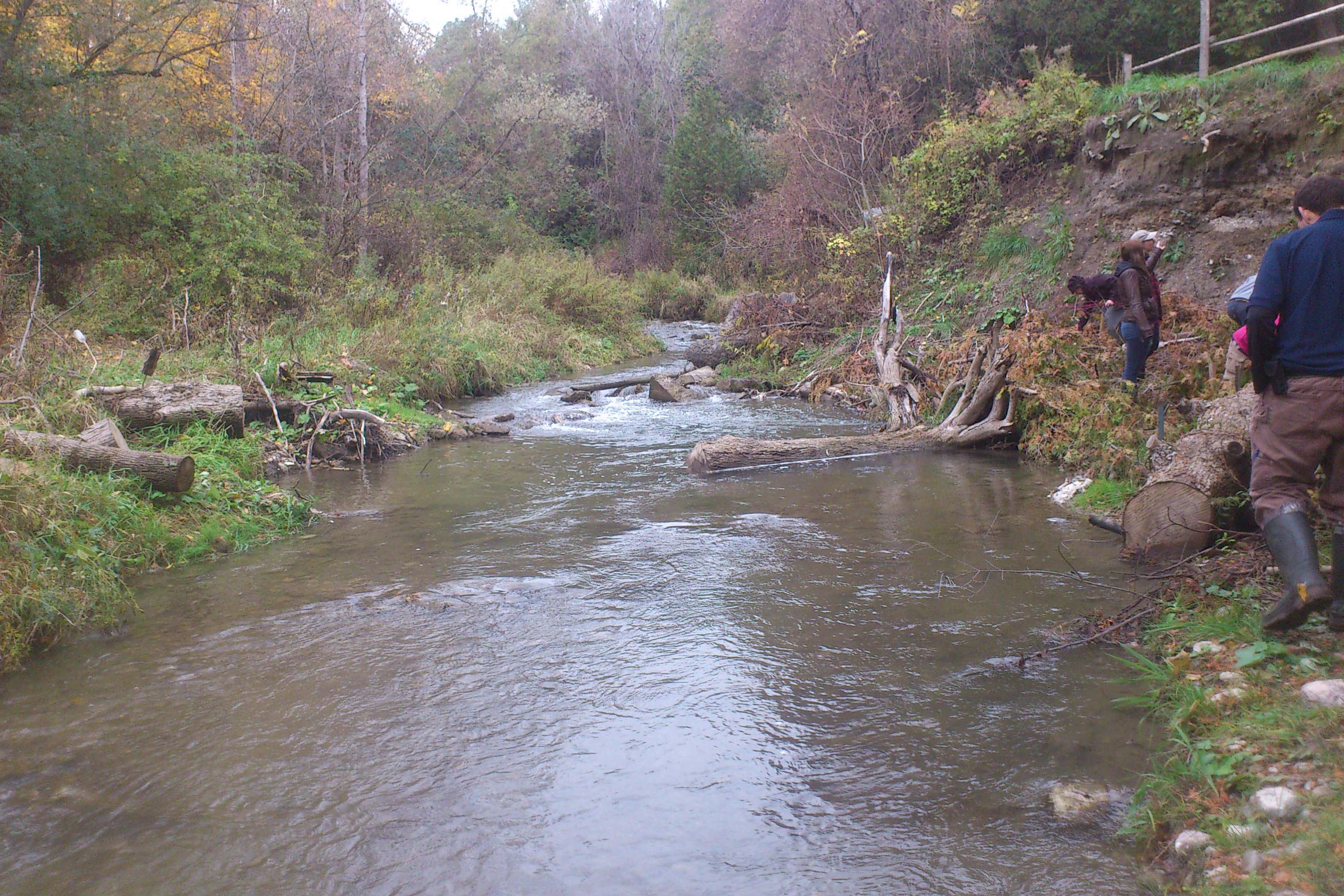
A stream restoration site. Two large trees had fallen across this stream and caused massive erosion to the bank. The trees were moved and now serve as deflectors to protect the bank.
The Fun Stuff
I find most learning to be enjoyable, but there is nothing that’s as much fun as getting out in the field and getting your hands dirty. On the Saturday we got to do just that.
We spent some time learning how to identify stream features, complete a Rapid Assessment Field Sheet and record Channel Morphology. It’s fairly basic stuff, but these are extremely valuable tools.
Then it was time to play with bugs – yay! Benthic monitoring is a very useful tool for measuring water quality. The presence, or lack thereof, of various organisms, will indicate how healthy the water is. We learned the method for collecting samples – picture us standing in riffles, kicking up sediment in a plot and someone standing just downstream to collect whatever was stirred up, follow that up with getting your hands cold while wiping off rocks. Then we learned how to process the sample. Training my eyes to look for tiny organisms took some time. Even harder was trying to pick them out of the sample and put them in our counting tray.
We finished with visits to stream restoration sites where we could see the results of restoration efforts. It is remarkable what can be done to a stream and how quickly it can adapt. It is important to remember that a good stream can be made unhealthy quite quickly, but an unhealthy stream can also be turned around fairly short order, given the right help. As a nascent Stream Steward, I hope to be able to provide that help in the future.
The Next Step
I have two goals that I need to work on now:
- Find a stretch of stream to focus on, and
- Continuing to educate myself.
The resources I was introduced to at the training have become my latest reading material. There are a few streams in my area that could use some work and it is my hope that I will have some time (and permission) to observe them in the future. This training goes further than just your community, however. I find that I look at all streams differently now. I look to see if any restoration work has been completed, or if it is a stretch of water that needs help. In addition, I look at areas that I know are great for holding fish, and therefore are likely to be quite healthy, and then compare their attributes with other sections of a stream.
If you are interested in becoming a Stream Steward, I would recommend signing up for a formal training programming like this one. There is a lot of good you can do, but you need to be aware of the challenges.
The CSSP program was free of charge, ran two days (Thursday night and Saturday), and provided the participants with a variety of resources to take home and use for future projects.
A huge thanks goes to Andrea from CSSP. She is an amazing and enthusiastic teacher and inspired all of us to go back to our communities and apply our new found knowledge.
argosgirl
Latest posts by argosgirl (see all)
- Open Water Season Begins - March 16, 2024
- A Day Trip To South River - March 2, 2024
- New Year’s Camping At MacGregor Point - February 24, 2024
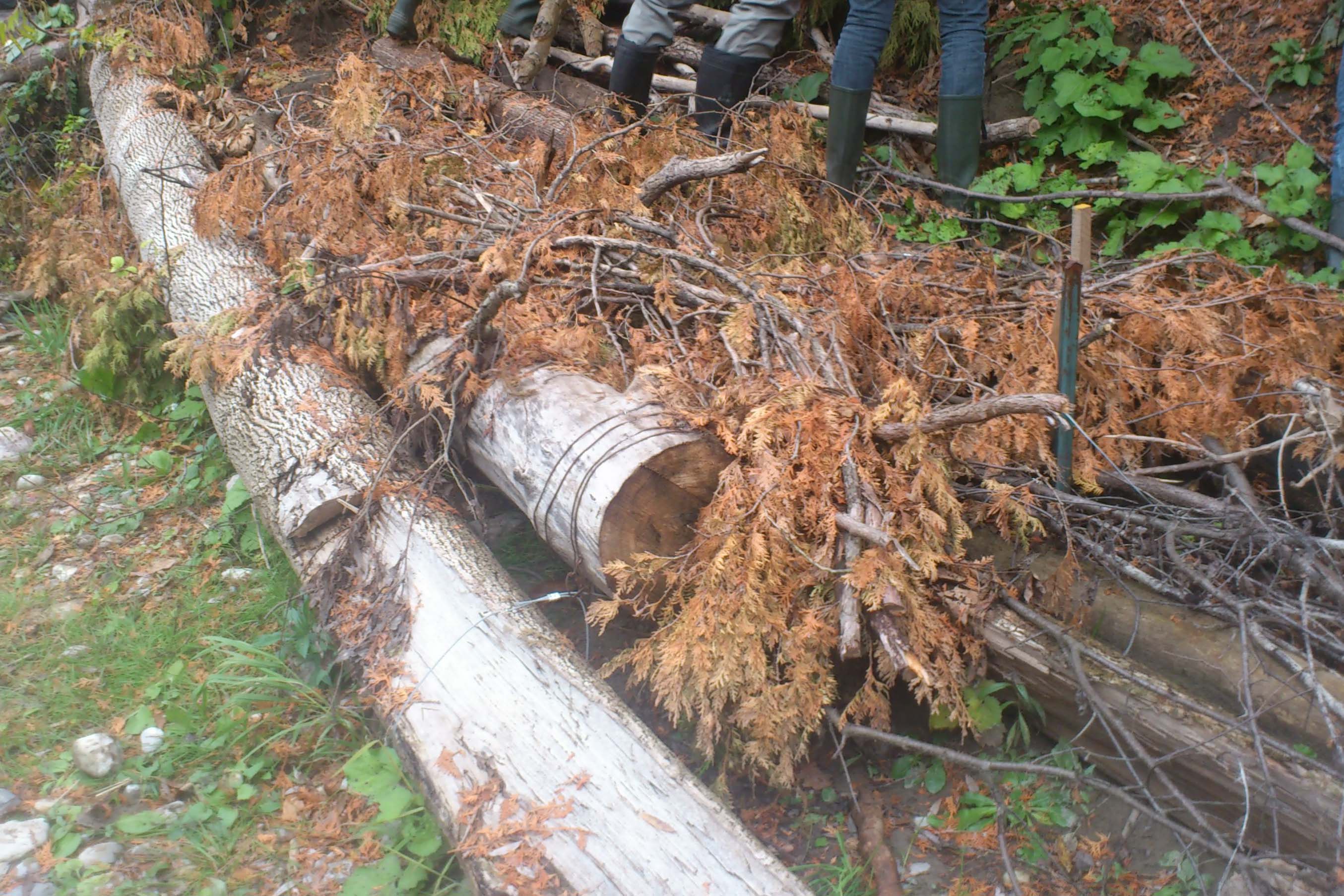
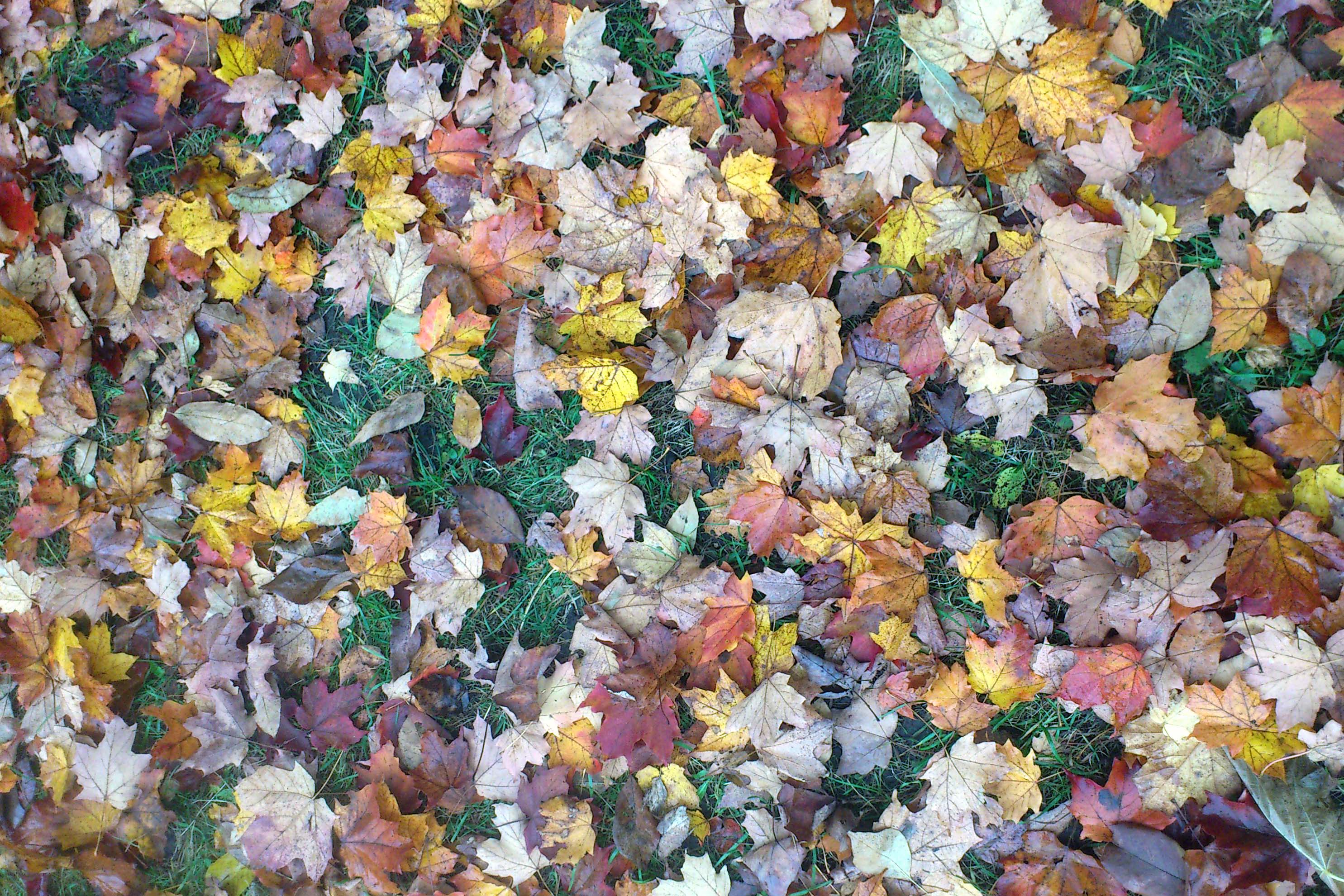
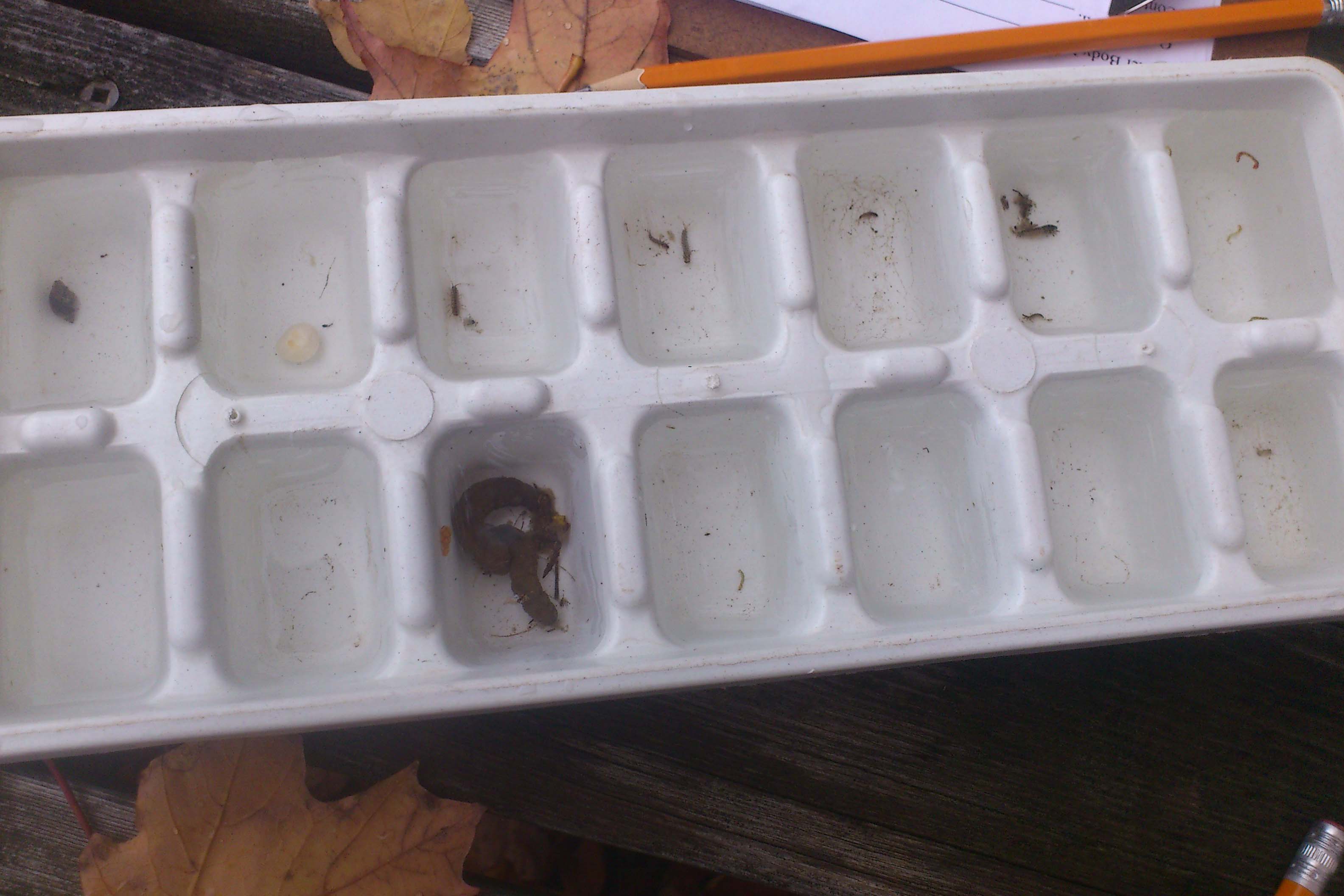
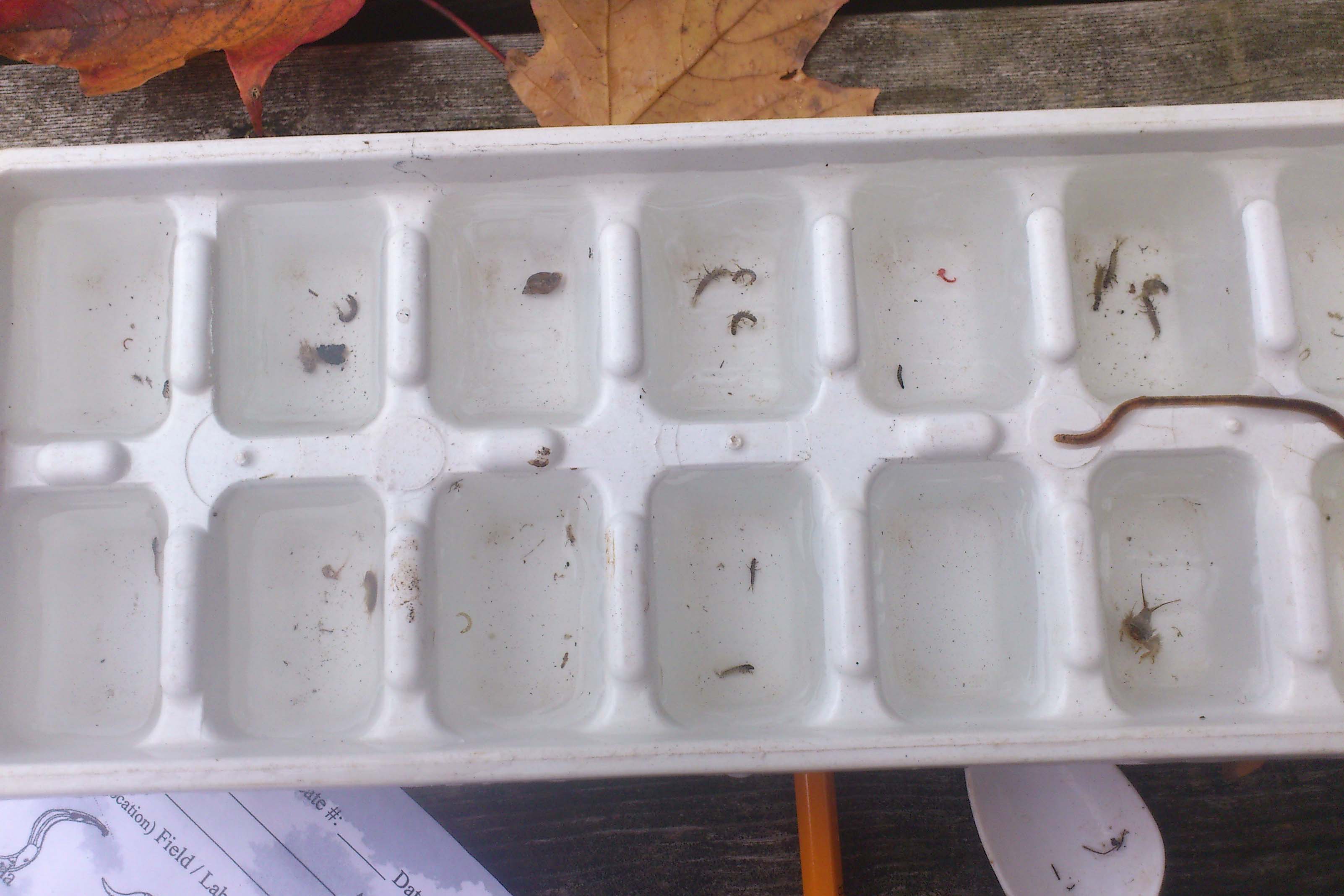
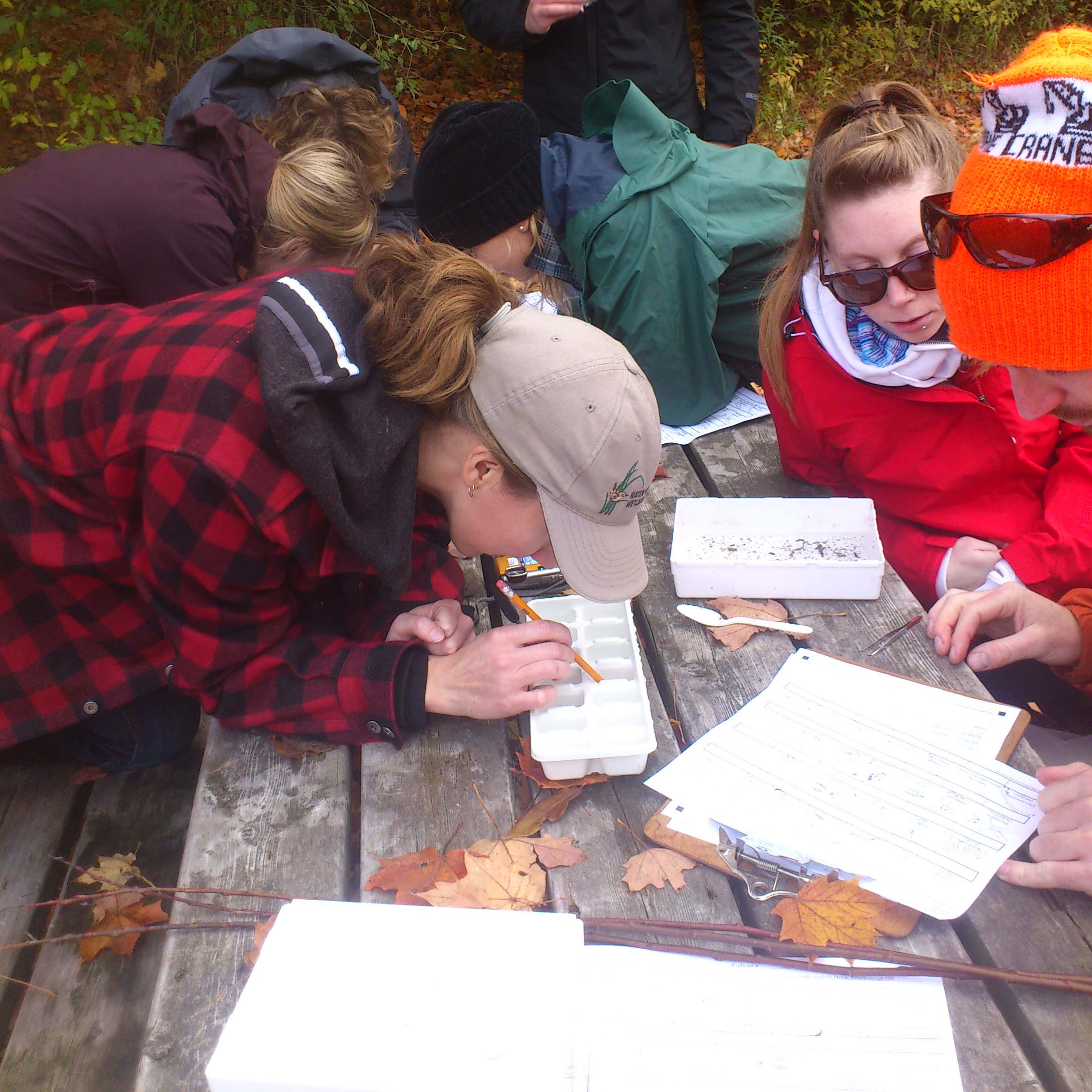


Dear Nascent Stream Steward,
As a long-time steward of our small streams who’s been involved with lots of hands-on projects, I recognize a very good introduction to the subject! Thank you. Also, I really like the Thoreau quote on the corner of your blog. Appreciatively,
Thank you, Walt! I really appreciate the kind words, especially from a long-time steward 🙂